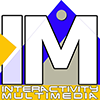Contents
Technology-enabled Learning (TEL) is an educational approach that leverages technology to enhance the learning process. By integrating multimedia elements, such as videos, animations, and interactive content, technology-enabled learning becomes more engaging and effective. Multimedia offers various formats that cater to common learning styles, fostering better understanding and knowledge retention. Learners can access educational materials anytime and anywhere, enabling self-paced learning and personalized experiences. Moreover, multimedia-rich resources cater to visual and auditory learners, making complex concepts more accessible. Technology-enabled learning with multimedia empowers educators to create dynamic and interactive learning environments, encouraging active participation and boosting overall learning outcomes. As technology continues to advance, its integration with multimedia in education promises an exciting future for accessible and impactful learning experiences.
TEL can offer a number of advantages over traditional learning methods, including:
- Increased engagement
TEL can help to increase student engagement by making learning more interactive and stimulating. For example, students can use interactive simulations, games, and other digital tools to learn new concepts and practice their skills. - Personalized learning
TEL can help to personalize learning by providing each student with the content and activities that are most relevant to their individual needs. This can be done through adaptive learning systems that track student progress and adjust the difficulty of the content accordingly. - Flexibility
TEL can offer greater flexibility than traditional learning methods, as students can access learning materials and complete assignments at their own pace and in their own time. This can be particularly beneficial for students who have busy schedules or who live in remote areas. - Collaboration
TEL can facilitate collaboration between students by providing them with tools to communicate and work together online. This can help students to learn from each other and to develop their teamwork skills. - Access to resources
TEL can provide students with access to a wide range of resources, including online textbooks, articles, and videos. This can help students to learn more about the topics they are interested in and to find the resources they need to succeed.
Challenges of technology-enabled learning
While TEL offers a number of advantages, there are also some challenges that need to be considered, such as:
In the modern digital era, multimedia content has become an indispensable tool in education. Technology-enabled learning makes possible intensive use of multimedia-based content easily. By combining various forms of media, such as text, images, audio, video, and interactive elements, multimedia content enhances the learning process in numerous ways. This essay explores the advantages of using multimedia in education, focusing on how it improves engagement, comprehension, and knowledge retention. Additionally, it provides three practical examples of how multimedia is effectively employed to enrich the learning experience.
Advantages of Multimedia Content in Learning
Practical Examples of Multimedia Content
- Educational Videos and Tutorials
Educational videos are widely used to explain complex concepts across various subjects. Especially active videos represent added value.
In mathematics, videos can demonstrate problem-solving techniques step-by-step, making it easier for students to grasp mathematical principles. Similarly, in history or social studies, video documentaries bring historical events to life, making learning engaging and memorable. Explainer videos demonstrating specific tasks in ICT are extremely useful. - Interactive E-Books
Interactive e-books incorporate multimedia elements, such as audio narration, animations, and embedded videos, to create an immersive reading experience. In language arts, interactive e-books allow students to interact with the story, explore character backgrounds, and hear audio dialogues. This approach enhances reading comprehension and encourages students to explore literature more deeply. - Virtual Field Trips
Multimedia tools offer virtual field trips, enabling students to visit far-off places and experience different cultures without leaving the classroom. In geography and science classes, virtual field trips allow learners to explore geographical locations, ecosystems, and landmarks interactively. This first-hand experience deepens their understanding of the subject and broadens their perspectives.
Visits: 1

